

Antiperspirants are designed to prevent you from sweating, but how exactly do they do that? Well, they accomplish that goal by physically blocking your sweat glands so that the sweat they produce doesn't come to the skin's surface, mostly with the use of aluminum salts that form a plug when they come in contact with your skin.
Because antiperspirants control sweat production, in many countries, such as the United States, antiperspirants are regulated as medications, and not cosmetics, which means that these products have undergone meticulous testing to make sure they’re safe to use. That’s exactly why you typically have a very specific list of directions on the back of the antiperspirant’s packaging.
Related Article: The Real Meaning of Misleading Skincare Marketing Claims
Have you ever looked at those? We have, and it turns out that most people rarely apply and use antiperspirants correctly, which may be why your specific product isn’t working for you.
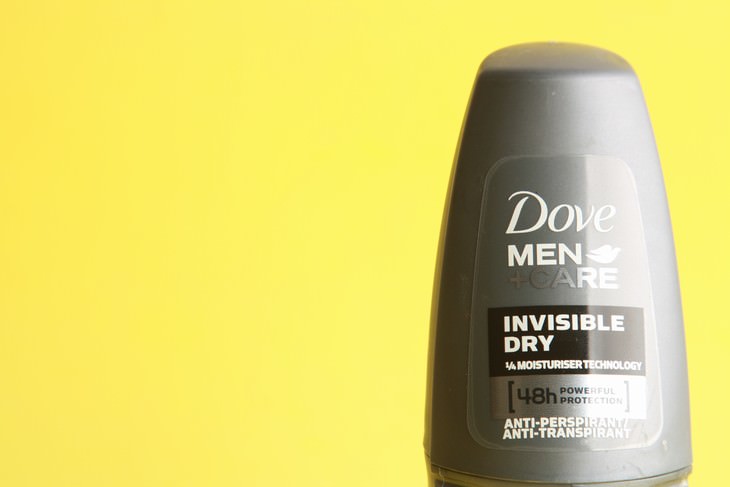
To be able to reap all the benefits antiperspirants can offer, you have to stop using it as a deodorant. Here are some useful tips that will help you:
Tip 1. The main mistake most people make is that they apply antiperspirants a while after taking a shower. So, if you’re an evening shower person, don’t forget to apply antiperspirant as soon as you get out of the shower, and not the morning after. In fact, applying antiperspirant at night ensures the product starts working while you’re asleep and prevents sweating throughout the day.
Tip 2. Apart from that, make sure you always apply antiperspirant on dry and clean skin, this will guarantee maximum sweat protection. Needless to say, this also means that layering an antiperspirant is useless. Instead, wash off the remnants of old antiperspirant and dry the area before reapplying antiperspirant.
Tip 3. Lastly, remember that antiperspirants can be applied to any body part, not only your armpits. In fact, you can spray your thighs or even feet to prevent sweat, odors, and chafing.
We hope these tips will help you get the most out of your antiperspirant. If not, look through our article about 10 Common Deodorant Mistakes, where we address several other deodorant-related issues.

12 of the WORST Hair Care Mistakes All of Us Still Make
Here are 12 common hair care mistakes that may be responsible for the frizz, dry and split ends, hair thinning, and lack of manageability.

7 Items You Should Never Clean with Paper Towels
As useful as they are, paper towels are not fit for any task. Here are 7 items you should never clean with paper towels.
 8:02
8:02
Potatoes Are SO Versatile - 4 Simple and Yummy Recipes
Potatoes are good no matter how you serve them, and there are so many different ways to do it! Here are 4 delicious recipes.

The Do’s and Don’ts of Coffee Storage
The way you store your coffee is no less important than the kind you buy and the way you make it. So how can you ensure the perfect morning cup?

6 Home Security Mistakes to Stop Making Today
These security mistakes make you home an easy target for intruders. This is how to avoid them.

How To Ward Off the Most Common Summer Pest
In order to prevent unwanted pests in summer - especially cockroaches - consider this one important thing.
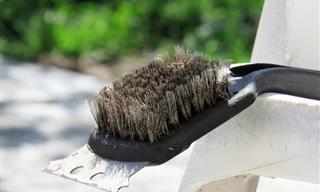
9 Surprising Uses for a Grill Brush Beyond the Grill
The grill brush isn’t just for cleaning your grill; it has many handy uses in your home.
 7:23
7:23
Discover 7 Ways to Make Your Home Smell Great
Check out these seven wonderful ways to keep your home smelling clean and fresh without breaking the bank!

Save Money on Pet Care with These Surprisingly Simple Tips
There are some simple ways to save on pet-related expenses without compromising your pet's health. Read on to find out how.

Here's How You Can Tell If Someone Is Lying to You
No one likes a liar, but thankfully, if you know how to read body language, you can tell if someone is lying to you.
 12:03
12:03
The Best and Worst Canned Foods for Your Pantry
All you need to know about canned foods ever!

How to Distinguish between Chinese, Korean, and Japanese
After reading this guide, you'll be able to tell the Chinese, Korean, and Japanese languages apart!

Rodent Alert: Ways You May Be Inviting Mice into Your Home
Have you been unknowingly attracting rodents into your home? Below we list 6 ways you may actually be inviting these pests into your house...

12 Helpful Uses for Eucalyptus Oil You've Got to Try
With so many health benefits, which you will discover in the article ahead, you'll find Eucalyptus Oil has many great uses.

Need Your Clothes to Dry Fast? Here's What You Should Do
When your clothes are wet, and you need them to dry quickly, what do you do? This guide will tell you all you need to know.
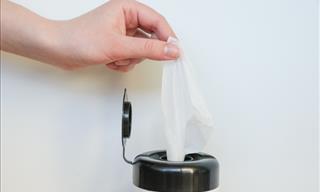
Home Sanitizing Is Easy With These DIY Disinfectant Wipes!
This article shows you how to make disinfectant wipes at home 3 ways using just three ingredients you already have at home.
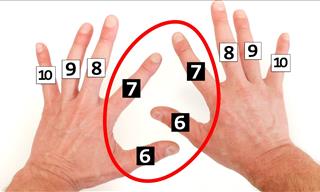 3:10
3:10
How to Do Multiplications With Your Hands!
This simple mathematical trick is a great little tip to have when you need to make quick multiplications, or when you want to teach a child something neat!

9 Facts You Didn’t Know About In-Flight Food And Drinks
Airplane food is notorious, but since we don't have any other options, the following 9 tips will make the culinary experience that much more enjoyable.

10 Common Electrical Mistakes Homeowners Must Avoid
These common electrical mistakes could endanger your family.

Make 5 Fabric Softeners with Ingredients You Have at Home!
This guide will help you make your own money-saving fabric softener that smells just the way you want it to!

Here's How to Keep Your Face Free of Dead Skin Cells
We always feel better when we're looking radiant, and that can be down in no small part to removing dead skin cells from our faces. Make these scrubs at home.
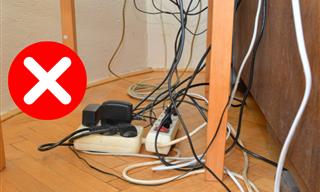
11 Extension Cord Mistakes That Could Put You in Danger
Knowing how to handle extension cords correctly can help prevent fires, electrical shocks, and other risks.
 14:08
14:08
Can Animals Truly Predict Earthquakes?
Seismologist Lucy Jones debunks popular earthquake myths and tells how we can really prepare before a big earthquake hits...

Wearing Sunscreen? Pay Attention to These 7 Critical Areas
The next time you are heading out into the sun, make sure you cover these vital spots of the body with sunscreen.
 18:31
18:31
These 27 Great Bathroom Hacks Will Make Your Life Easier
Looking for some ingenious bathroom and shower hacks to make your life a lot easier? If so, you’ve certainly come to the right place!

Impress Guests With 14 Nifty Napkin Fold Styles!
This terrific video tutorial will show you 14 easy-to-do napkin folding styles that are creative, whimsical and will guarantee your guests approach the tables with admiring smiles.

How to Always Look Great in Photos - 10 Useful Tips
If you want to improve your posing skills, check out these pro photographer’s tips!

A Dog's Tail Can Tell You a Lot About How It's Feeling
By looking at your dog’s tail you can also tell if your dog is scared, happy, embarrassed, or tired. Find out what to look for below.

Not Only Light: 11 Great Uses for Wax Candles
With the following 11 useful tips, you can use candles in new and innovative ways to help you around the house!
 5:09
5:09
Woah! Who Knew There was a Correct Way to Cut a Cake?
When it comes down to cutting a cake, there is supposedly a right and wrong way. In this video, Alex Bellos talks us through the right way.
 18:57
18:57
A Better Kitchen: 20 Tips You Can't Afford to Miss
How to make your kitchen one of the EASIER rooms in the house? Just check out these 20 tips that'll make your kitchen a much nicer place

Versatile Ingredients You Should Always Have in a Kitchen
The 15 foods we feature on this list are all serious multitaskers, so it's always good to stock up on these!
 11:42
11:42
The Ultimate Summer Life Hacks Explained
Dive into these essential hacks to elevate your summer experience!
 9:08
9:08
An Easy and Affordable Makeup Tutorial for Older Women
Kerry-Lou, a makeup artist, will explain how to do a natural-looking makeup look so that you look fresh-faced, but not overly made up.
 3:13
3:13
This is How You Turn a Frozen Steak Into a Gourmet Meal...
As most know, cooking a frozen steak is quite tricky. Find out the secret behind it by means of this video.
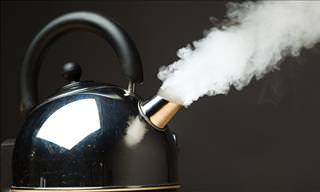
This Is Why You Should NOT Reboil Your Water!
It can be tempting to reboil water for your hot drinks. But when ordinary water is over boiled or reboiled, the chemical compounds change for the worse. Learn about it here.

Learn to Prevent and Clear This Pest From Your Cupboards
So what exactly should you do if you’re facing the Indian Meal Moth in your home, and how can you prevent its appearance?

How to Remove Salt Stains From Fabrics, Shoes & Flooring
Salt stains are more common than you think. Learn to remove them effectively from your shoes, clothes, car interior, and floors in this useful guide.

This is How You Can Stop Your Partner's Snores
Does your partner keep you awake at night with their annoying snoring? If the answer is yes, this guide is just what you're after.

Laundry Tips: Make Your Towels Soft and Fluffy Again
Here are some useful tips that will help you make your crusty towels feel soft and fluffy again while also increasing their longevity.

Before Renovating Your Home, Ask Yourself These Questions
Without clear expectations from your home renovation, the project is at risk of failure & overspending. These questions will help you organize your thoughts

11 Sandwich Making Mistakes the Majority Of People Make
Making an excellent sandwich is not as easy as it may seem, and the majority of people make small mistakes that make their sandwiches less...

Once and For All, Is there a Right Side to Aluminum Foil?
Many home cooks have pondered the question 'should I use the sticky or the dull side of an aluminum foil'? We're here to answer this question once and for all

We’ve Got All The Tips And Tricks to Get Out Coffee Stains
These are some tips to help you clean coffee stains that can affect 10 different areas of your life but are easy to fix.

9 Effective Methods for Removing Oil Stains from Clothes
Oil stains are the greatest enemy, not to mention a nightmare, for anyone who does laundry - but now there's a solution...actually 9 of them!

Should You Preheat the Car Engine When It’s Getting Cold?
Experts say that leaving the engine run idle in cold weather is both a waste of your money and terrible for the car engine and the environment.

Have Your White Clothes Lost Their Brightness? Try This!
Restore your clothes to their former glory with this natural remedy.
To enable your Ad-Free Subscription, please fill the fields below
Your subscription was successful, now you can enjoy an ad-free experience!! Note: To make sure you get no ads, please make sure to log in to your account. If you are logged in already, then refresh the page. The subscription can be cancelled at any time.


